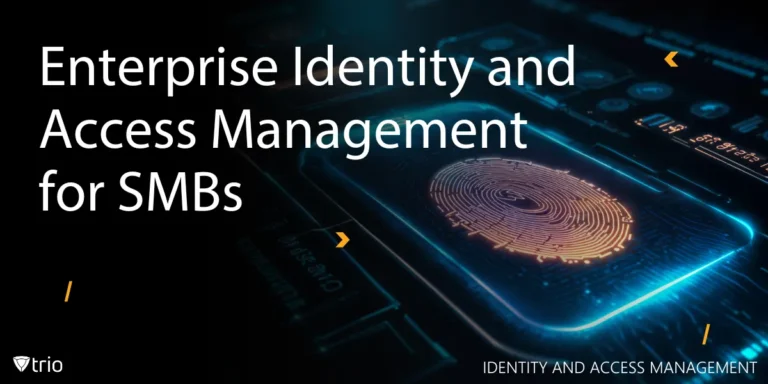A Policy Enforcement Point (PEP) is a crucial element of modern access management and Zero Trust architecture strategies. Acting as the gatekeeper to organizational resources, it ensures that access requests are evaluated against predefined policies before granting or denying access to users or devices.
The definition of policy enforcement point centers on its role as the enforcer of security decisions made by the Policy Decision Point (PDP). Together, these components create a framework for managing access securely and effectively. Think of a PEP as a security checkpoint at an airport—it determines who can pass through and who must stay out based on established rules.
As threats evolve and organizations shift to ZTNA integration, the demand for effective PEP solutions grows. They are indispensable for implementing trust architecture ZTA, ensuring robust protection for access to resources.
Policy Enforcement Point vs. Policy Decision Point
In the realm of access control, understanding the roles of Policy Enforcement Points (PEP) and Policy Decision Points (PDP) is essential. These two components work hand-in-hand but perform distinct functions.
Policy Decision Point (PDP): The Brain Behind the Operation
The PDP processes the incoming access request and generates an authorization decision based on the organization's policies, contextual data, and user attributes. It determines whether access should be granted or denied.
Policy Enforcement Point (PEP): The Action Taker
The PEP executes the PDP's decision, serving as the "hands" of the system. It physically enforces access control by blocking or permitting access to resources.
For example, in ZTNA solutions, when an employee requests access to a sensitive database, the PDP evaluates the request. If approved, the PEP grants access; otherwise, it blocks the user. This collaborative model ensures that security decisions are implemented efficiently.
To fully understand these roles, it’s also helpful to explore their relationship with the Policy Administration Point (PAP), which creates and manages the policies that PDPs and PEPs execute.

The Role of Policy Enforcement Points in Zero Trust Security
In a Zero Trust Architecture (ZTA), no user or device is inherently trusted, regardless of whether they are inside or outside the network. This paradigm relies heavily on Zero Trust policy enforcement points to evaluate every access request.
Dynamic Policy Enforcement
The PEP ensures that access decisions are made dynamically, evaluating each request based on the evaluation of factors like user identity, device health, and contextual attributes. This guarantees that only trusted users gain access to a resource.
Attribute-Based Access Control (ABAC)
Modern PEPs often leverage attribute-based access control (ABAC) to implement trust principles. This system evaluates access policies against user attributes, such as department, role, or location, and enforces access only when all conditions are met.
For instance, in a financial organization, a PEP may grant access to sensitive financial data only to employees working within the office network on company-issued devices. If the same employee tries accessing the data remotely, the PEP might deny the request, preserving the company’s security requirements.
Policy Enforcement Point Capabilities
The capabilities of a policy enforcement point make it an indispensable tool for organizations prioritizing security and compliance.
Comprehensive Authorization Management
PEPs manage access in real time by processing access requests and collaborating with PDPs to enforce policies. They are responsible for ensuring that only authorized users gain access to resources, minimizing vulnerabilities.
Scalable Deployment Across Systems
One of the key strengths of modern PEPs is their ability to operate across various environments, from on-premises systems to cloud-based infrastructures. Many organizations even opt for open-source solutions, allowing for flexible and cost-effective implementation.
Policy Enforcement Point Example
A hospital using a cloud-based patient data system is an excellent example of how a PEP works. When a doctor tries to access patient records, the PEP evaluates the request against policies, including user credentials, device compliance, and network security. If any parameter fails, the PEP denies access, safeguarding sensitive data from unauthorized exposure.
Such use cases demonstrate the critical role PEPs play in balancing operational efficiency with stringent security.

How Policy Enforcement Points Strengthen Enterprise Security
Policy Enforcement Points (PEPs) play a crucial role in protecting enterprise resources by enforcing precise, policy-driven access controls. They help prevent unauthorized access, ensure compliance with regulations, and support Zero Trust principles by verifying every access request. These capabilities make PEPs indispensable for modern security frameworks.
Preventing Unauthorized Access
By enforcing access control at every juncture, PEPs prevent unauthorized users or devices from gaining access to a resource. This is particularly important in regulated industries like healthcare, where protecting sensitive information is very important.
Supporting Compliance Goals
Organizations often face stringent compliance requirements, such as GDPR or HIPAA. PEPs help meet these requirements by ensuring that access policies are consistently enforced, reducing the risk of non-compliance penalties.
Facilitating Zero Trust Principles
A well-implemented PEP adheres to Zero Trust principles, continuously verifying users and devices. This ensures a robust defense against threats, even if attackers bypass traditional security measures like firewalls.
For a deeper understanding of Zero Trust frameworks, consider exploring the Kipling Method Zero Trust, which provides a systematic approach to managing access control.
How Trio Simplifies Policy Enforcement Point Management
As the demands of modern IT environments grow, managing policy enforcement points becomes more challenging. Trio, a simplified Mobile Device Management (MDM) solution, addresses this complexity by integrating advanced PEP capabilities with device management tools.
Unified Control Across Devices
Trio simplifies PEP management by providing a centralized platform to monitor and enforce policies across all connected devices. This ensures consistent security protocols for every access request and reduces administrative overhead.
Enhanced Access Control
Trio combines robust device management with real-time policy enforcement to ensure that access is granted only to compliant users and devices. This minimizes vulnerabilities while maintaining operational efficiency.
Ready to experience secure, efficient access control? Request a free demo today and discover how Trio can transform your IT environment.
Conclusion: Strengthen Your Security with Policy Enforcement Points
A policy enforcement point is a cornerstone of modern security frameworks, enabling organizations to implement dynamic, precise access controls. Whether used as part of a zero-trust architecture or to meet regulatory requirements, PEPs provide robust protection for sensitive resources. To simplify the management of your PEPs, consider Trio’s MDM solution, which integrates seamlessly with existing systems and strengthens your Zero Trust strategy.
Get Ahead of the Curve
Every organization today needs a solution to automate time-consuming tasks and strengthen security.
Without the right tools, manual processes drain resources and leave gaps in protection. Trio MDM is designed to solve this problem, automating key tasks, boosting security, and ensuring compliance with ease.
Don't let inefficiencies hold you back. Learn how Trio MDM can revolutionize your IT operations or request a free trial today!





